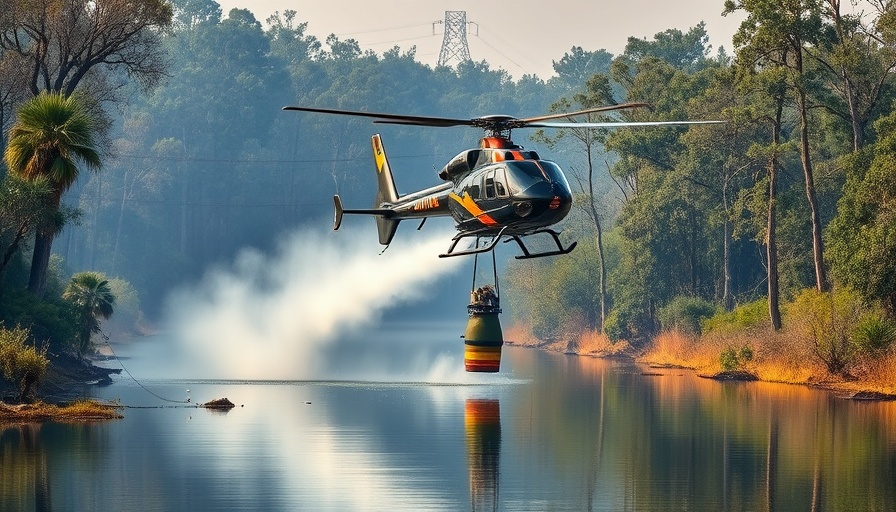
Florida's Wildfire Crisis: A Growing Challenge
High winds are not just an environmental occurrence; they can ignite devastating wildfires that threaten lives, homes, and entire communities. Florida's Miami-Dade County is currently facing this very crisis, as wildfires fueled by gusting winds have consumed over 26,000 acres. With road closures affecting local traffic and emergency services, the urgency of the situation is tangible, showcasing the challenges firefighters encounter daily.
Understanding the Impact of High Winds on Wildfires
Wildfires are often exacerbated by significant weather conditions. High winds act as accelerants, causing flames to spread rapidly and unpredictably. The unique terrain and vegetation of Florida, with its mix of forests, wetlands, and urban areas, create a volatile environment. Firefighters are not only battling the flames themselves but also navigating the inherent dangers posed by strong winds that can shift smoke and embers, causing fires to leap over obstacles in a matter of moments.
The Human Factor: Lives and Communities at Stake
Through the chaos, the human aspect remains at the forefront of the wildfire narrative. With homes at risk, families are facing harrowing evacuations. Local shelters are being set up to support those displaced, illustrating community resilience amidst adversity. Firefighters, working 'round the clock, are dedicated not only to saving property but also to safeguarding lives. Each day, they embody bravery and sacrifice, underscoring the crucial roles they play in crisis response.
A Deeper Look at the Ecological Consequences
While human impacts are dire, the ecological repercussions of the fires can also be severe. Wildfires can lead to loss of wildlife habitats and can disrupt local ecosystems. As a result, it prompts conversations about long-term environmental policies and approaches to forestry management. Proactive strategies may help mitigate the risks associated with wildfires, particularly as climate change continues to influence these weather patterns.
The Role of Technology in Firefighting
In response to this evolving landscape, technology is becoming increasingly important in firefighting. Devices such as drones equipped with thermal imaging help firefighters gain better situational awareness, detecting hotspots that may not be visible from the ground. This technological advancement enhances their ability to combat the flames effectively and protect vulnerable communities.
Future Predictions: Preparing for the Rising Threat
As climate change continues to reshape weather patterns, experts warn that the frequency and intensity of wildfires may only increase. Communities across Florida might need to reconsider emergency preparedness plans and invest in more robust firefighting resources. Education programs aiming to inform residents about fire safety and preparedness could potentially save lives in the future.
In Search of Solutions: Collaborative Efforts
A multi-faceted approach is essential in combating this wildfire crisis. Collaboration among local governments, state agencies, and environmental organizations must be prioritized. Joint efforts can provide awareness campaigns, resources for effective fire management, and extensive rehabilitation plans for areas affected by wildfires. Only through unity can communities innovate and enhance their resilience.
In conclusion, the situation in Florida serves as a stark reminder of the unpredictable nature of wildfires. As we watch firefighters bravely face these challenges, it is imperative to discuss both immediate actions and future prevention strategies. The power of community and technology keeps hope alive, paving the way for resilience in the face of adversity.
 Add Row
Add Row  Add
Add 




Write A Comment